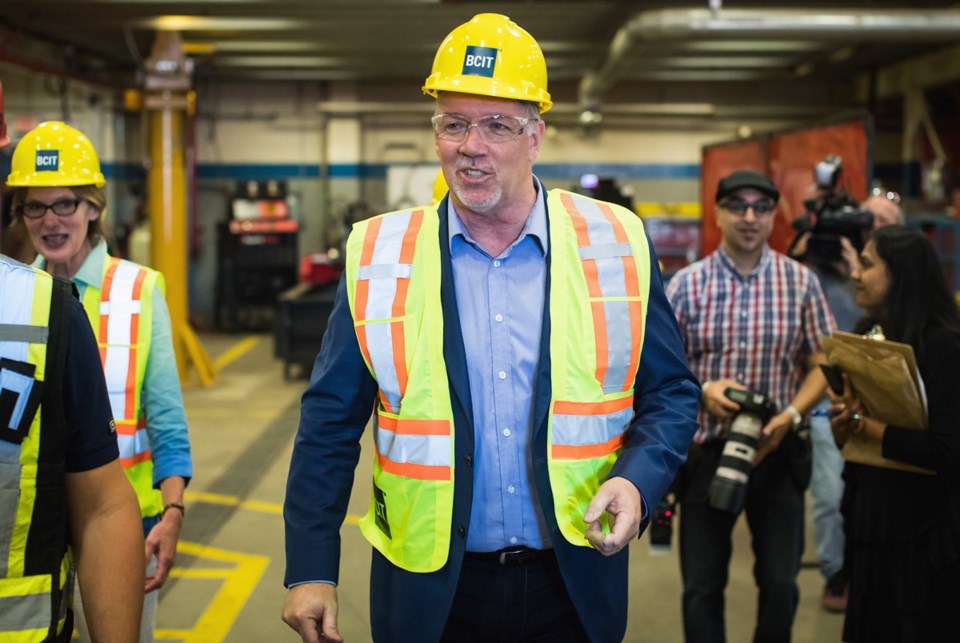It’s bad enough that the B.C. government announced last week that the new state-run B.C. Infrastructure Benefits Inc. will funnel billions of dollars worth of public-works contracts to one union representing a minority of the province’s construction workers.
In the background of the brouhaha over the announcement lies a problem that hasn’t received much attention, but will cause economic pain down the road. What many have missed is that the new infrastructure policy will likely make B.C.’s coming labour shortage much worse.
Last year, British Columbia released its labour-market outlook. It concludes that the province’s construction industry — the one most affected by the government’s new policy — is in dire need of new workers. It needs more than 59,000 new workers over the next decade to meet the B.C. construction market’s needs.
And these new workers must replace the existing workforce in B.C., 94 per cent of whom are expected to retire or leave over the next decade. The fact is that construction workers are getting older. National labour-market information organization Buildforce notes: “Over the past decade, B.C. has seen the share of the population that is 65 years or older increase, while the share of the population in their prime working years (25 to 54 years old) has been declining.”
This is why the construction industry has taken an “all hands on deck” approach in recent decades. Traditional unions such as the Building Trades Council, alternative unions such as the Christian Labour Association and associations have been working hard to attract workers of all sorts into the trades. The entire industry has made strenuous efforts to get more women, Indigenous people and other underrepresented groups into the trades.
Typically, the proper response to such a dire need for labour supply is to engage and invite the whole industry, with all of its various approaches to labour, to leverage their unique capabilities to bring as many people into the industry as possible. Everyone knows that an increased range of suppliers best meets increases in demand.
That’s what makes the government’s choice to direct all work through one company, affiliated with one union, all the more strange. The government admits its new procurement model will have costs. Cardus research suggests that this type of policy would make just the six largest infrastructure projects in the province up to $4.05 billion more expensive. If all projects become subject to the new infrastructure construction policy, the burden for British Columbians would be higher still.
But, according to Premier John Horgan, this is “the cost of making sure we’re training the next generation of workers.” The head of the B.C. Building Trades — the union chosen by B.C. Infrastructure — says that “given the skill shortage we are about to face, we need to have a procurement model that is going to help the apprentice get their work hours.”
What they don’t explain, and what simply cannot be explained, is how reducing the labour options for public works will achieve their objective. Yes, the Building Trades model does have apprentices and it does a good job of targeting new workers. They are a small, but integral part of the industry. But so are other labour models — including alternative unions and employer groups.
Are the apprentices, women, and Indigenous workers who have exercised their constitutional right as Canadians to work under other labour arrangements somehow of a lower class and unworthy of the right to work on projects their tax dollars paid for? Why?
The new policy has taken an industry with a diverse ecosystem of labour models and efforts to attract and retain underrepresented groups and younger workers, and cut down all but one. It’s the economic equivalent of clear-cutting a rainforest and planting one type of tree. And it has chosen a tree that is aging more quickly than others.
Statistics Canada notes that the key demographic needed for the industry — younger workers — has seen a decline in union membership that is “more pronounced” than other segments of the population. Our demographic research notes that alternative unions, which provincial policy now excludes, run the other way, with a workforce skewing four per cent younger than the provincial average.
BuildForce’s report on B.C. notes that “meeting the expected requirements while contending with rising retirements will require a co-ordinated effort by industry and its stakeholders.” With its announcement, the B.C. government has gone the other way. And while it will feel the pinch from increased infrastructure costs today, it’s 10 years down the road that British Columbians will feel the real pain.
Brian Dijkema is work and economics program director at think-tank Cardus.



